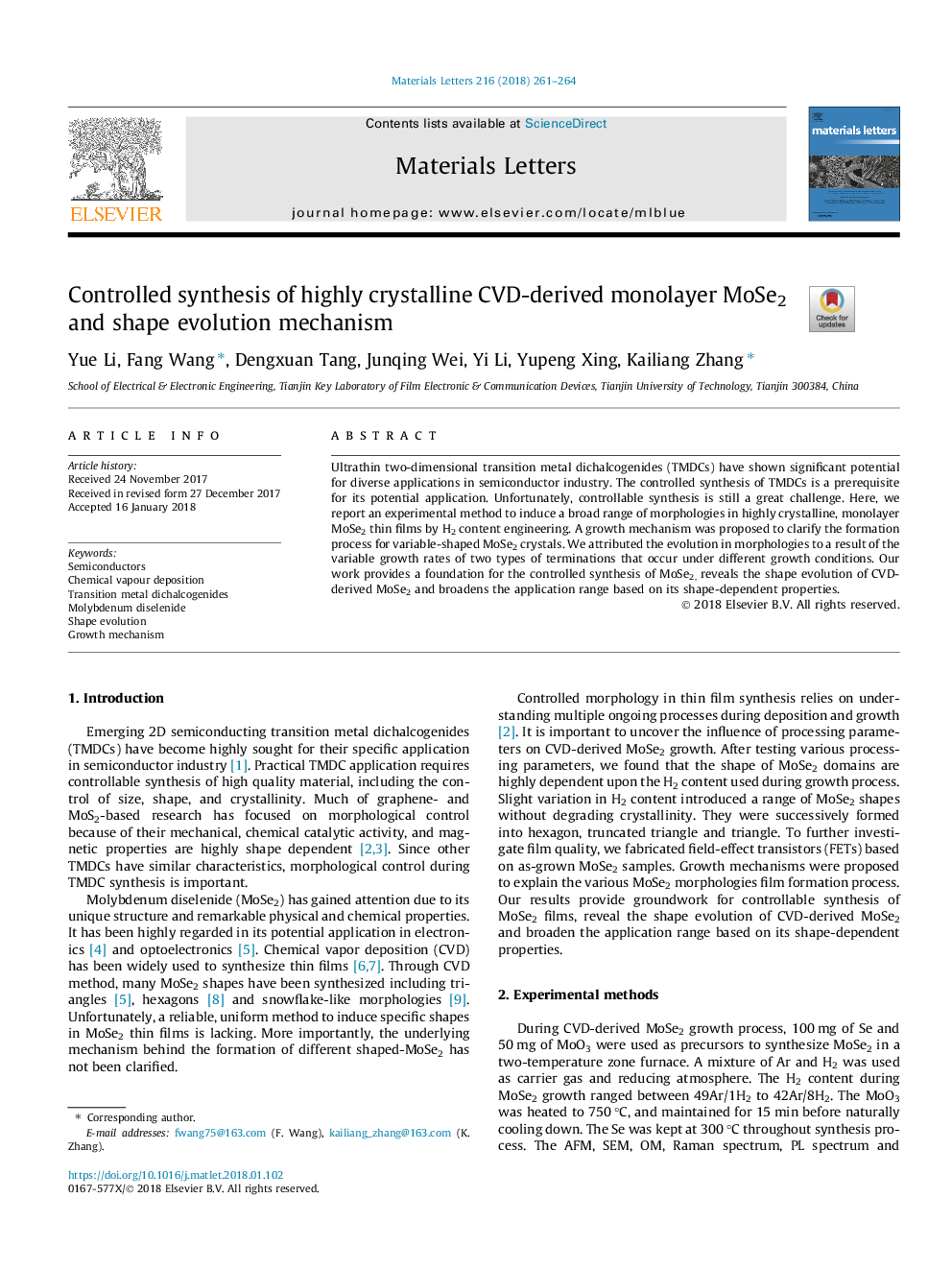| Article ID | Journal | Published Year | Pages | File Type |
|---|---|---|---|---|
| 8014680 | Materials Letters | 2018 | 4 Pages |
Abstract
Ultrathin two-dimensional transition metal dichalcogenides (TMDCs) have shown significant potential for diverse applications in semiconductor industry. The controlled synthesis of TMDCs is a prerequisite for its potential application. Unfortunately, controllable synthesis is still a great challenge. Here, we report an experimental method to induce a broad range of morphologies in highly crystalline, monolayer MoSe2 thin films by H2 content engineering. A growth mechanism was proposed to clarify the formation process for variable-shaped MoSe2 crystals. We attributed the evolution in morphologies to a result of the variable growth rates of two types of terminations that occur under different growth conditions. Our work provides a foundation for the controlled synthesis of MoSe2, reveals the shape evolution of CVD-derived MoSe2 and broadens the application range based on its shape-dependent properties.
Keywords
Related Topics
Physical Sciences and Engineering
Materials Science
Nanotechnology
Authors
Yue Li, Fang Wang, Dengxuan Tang, Junqing Wei, Yi Li, Yupeng Xing, Kailiang Zhang,
